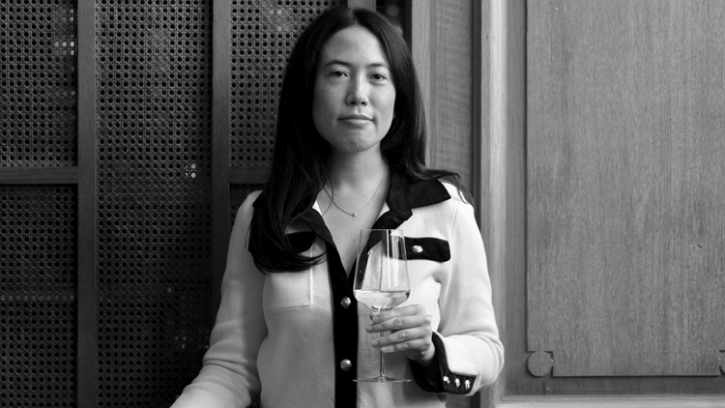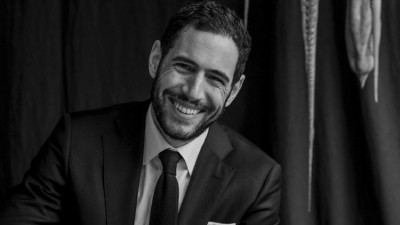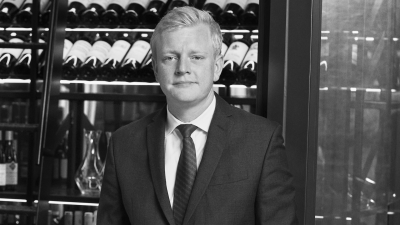Uncorked: Erika Haigh

Tell us about the moment you first became interested in sake
Unlike most people in the drinks industry, it wasn’t a particular bottle of sake or one defining ‘aha!’ moment that lead me down the rabbit hole. For me it was a gradual journey. I was born and raised in Japan until the age of 18, so sake has always felt familiar, it’s deeply ingrained within the culture. Oddly enough, it was only after moving abroad that my interest in sake developed. I remember spontaneously booking myself in to take the WSET 3 sake course and from here, the beverage became my primary focus. It helped me realise that through learning about sake, I could reconnect with my Japanese roots and identity. Sake offers a great insight into Japanese regionality, culture, and history.
Tell us about your sake list at Moto
All sakes are sourced from craft producers in Japan that I have formed direct relationships with, cutting out the middleman, I import directly from them. None of these products have ever entered the UK market before. I try to always have a selection of sakes from north to south Japan.
Throughout your career, have you had any beverage-related disasters?
Yes, and it was so bad that I am now cringing just thinking about it. During a brief stint as a wine sommelier, I was working in a upscale restaurant where the wines were displayed as a wall on the restaurant floor. The highest point was out of reach, only accessible if you stand on a stool. On a particularly busy shift, I overestimated the height of the shelf, so in an effort to speed up the process, I stood on my tiptoes and it felt just within reach. It wasn’t quite.. I ended up knocking it down along with all the wines beneath it, which were around 13 bottles of expensive red wines from California. Just imagine the sound the wines made as they all came crashing down, the pool of red wine all over the floor, having the whole restaurant floor observe with pity as I cleaned it all up (thankfully I had the help of my extremely kind colleagues).
Name your top three restaurant wine lists
Sake Collective for sake and 67 Pall Mall and The 10 Cases for wine.
Who do you most respect in the wine or sake world?
Satomi Dosseur, the founder and director of Enshu Limited. She runs the SSI international kikisake-shi program as well as several consulting jobs related with Japanese beverages in the UK. Not only do I respect her as a sake educator but also as a fellow female business owner. She has been such a valuable mentor to me over the last few years.
What’s the most interesting sake you’ve ever come across?
Shiraki Brewery’s underwater-aged Daruma Masamune.
What are the three most overused tasting notes?
Fruity, umami and minerality. I use these words very frequently as well, so guilty as charged.
What’s the best value sake on your list at the moment
Yonetsuru Brewery’s Ultra Dry Junmai – absolutely delicious and incredibly versatile for food pairings and service at a range of temperatures, while being the least expensive sake on the list.
What is your ultimate food and drink match?
Pizza and sake - the cheesiness of the pizza goes so well with the lactic notes common to many sakes. Also, as a sommelier, it’s nice to sometimes enjoy a pairing without any fuss, without making it a cerebral exercise, but simply to enjoy.
Old World or New World?
This is obviously not relevant to sake. That said, there are parallels with the concept in terms of sake brewed in Japan and the sake breweries that are now popping up all over the world. As a result, tons of new innovative flavours, brewing methods, and more are radically changing the sake world as we knew it. Also, I believe these “New World” sake breweries are doing a fantastic job of creating a new sake culture that resonates with their local audience, not least Kanpai London Sake Brewery in Peckham.
What is your pet hate when it comes to wine service in other restaurants?
When the team on-site has not received proper beverage training so they know less about their own offering than you do.
Who is your favourite producer at the moment and why?
I don’t want to say favourite, as I love every producer that I work with, but I do have to say that I am quite excited about the direction that Iwate Meijo Sake Brewery is headed in. Located in Iwate prefecture, they recently brought on a young leadership team, both on the managerial side and on the production side. This has led to a revitalisation in the brewery and they are now producing vibrant, fresh and modern styles of sake.
As a sake sommelier, what question do you most get asked by customers?
“How do you drink sake?” I believe this stems from the fact that while more people are starting to know about sake in the UK, they are absorbing contradictory information. Should the sake be served chilled or hot? In an “ochoko” (traditional service ware) or in wine glasses? With food or without food? The short answer to all of the above is that there is no one size fits all way of enjoying sake.
Which sake-producing region is currently underrated at the moment and why?
The region of Kyushu, in southern Japan, is primarily known for their production of shochu (a Japanese distillate native to Kyushu region). However, there has recently been a newfound appreciation for sake in Kyushu and some fantastic sake is being produced here.
It’s your last meal and you can have a bottle of any sake in the world. What is it and why?
Any one of the “phantom sakes” produced by Obuse Winery. This winery in Nagano prefecture brews sake almost as a hobby during the winter months when they are not making wine. Their range of sake is called Sogga Père et Fils and given how unique they are and how little is produced, it is quite hard to get your hands on them, even in Japan. But for my last meal, I would love to get my hands on this range, especially because this was one of the sakes I was fortunate enough to have early on in my sake career that allowed me to understand how much variety there is in the world of sake. It would almost be like coming full circle in my sake journey.





















